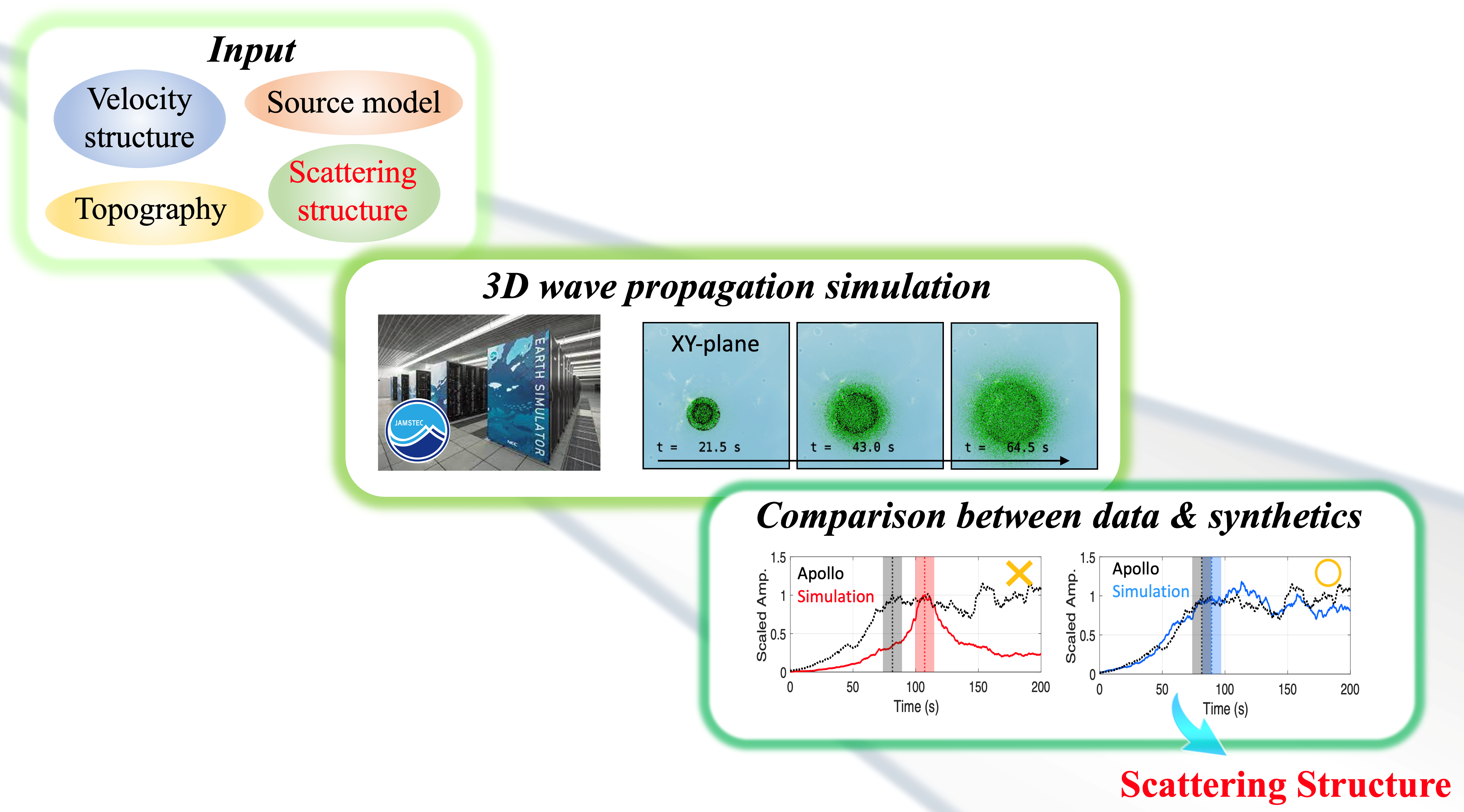February 27, 2023
A significant update in the lunar subsurface structure model through 3D seismic wave propagation simulation
SOKENDAI Publication Grant for Research Papers program year: 2022
Informatics Keisuke Onodera
Space and astronautical science
journal: of Geophysical Research: Planets,127.
DOI: https://doi.org/10.1029/2022JE007558

Under various parameter settings (for example, velocity structure, scattering structure), 3D seismic wavepropagation simulations were performed. The idea is to fi nd a preferable parameter set that better explains theobservations in terms of waveform and time evolution of seismic energy. In this study, we paid particular attention toscattering structure.
In lunar science, the internal structure is one of the most important topics because it strongly reflects the initial environment of the formation and subsequent evolution processes. As demonstrated on Earth, seismic observation is a powerful tool to investigate the interior structure (like seismic wave velocity, density, and physical states). About 50 years ago, several seismometers were placed on the Moon during the Apollo missions and opened the way to probe the inner structure. However, the extreme environment of the Moon, such as the dry and intense scattering structure (such as fractures, density fluctuation), prevents us from determining the lunar internal structure. So, it is crucial to understand the lunar subsurface environment to improve our knowledge of the lunar interior as well as the nature of seismic wave propagation under extreme environments. In this study, we especially focused on the subsurface scattering structure, which was poorly constrained so far.
While previous studies tried to estimate the subsurface properties mainly from data analysis, we tried a numerical approach to evaluate them from a different viewpoint. Consequently, our numerical simulations succeeded in reproducing the Apollo seismic observations for a certain parameter set (see Figure). This was the first accomplishment in lunar seismology and significantly contributed to constructing a new subsurface structure model including detailed information about structural heterogeneity.
Our model would be useful to answer the fundamental question of why the lunar seismological features are much different from Earth or Mars.
Bibliographic information of awarded paper
- Title: Quantitative Evaluation of the Lunar Seismic Scattering and Comparison Between the Earth, Mars, and the Moon
- Authors: Onodera, K., Kawamura, T., Tanaka, S., Ishihara, Y., & Maeda, T.
- Journal Title: Journal of Geophysical Research: Planets,127.
- Publication Year: 2022
- DOI: https://doi.org/10.1029/2022JE007558
Department of Space and astronautical science Keisuke Onodera(alumnus)
